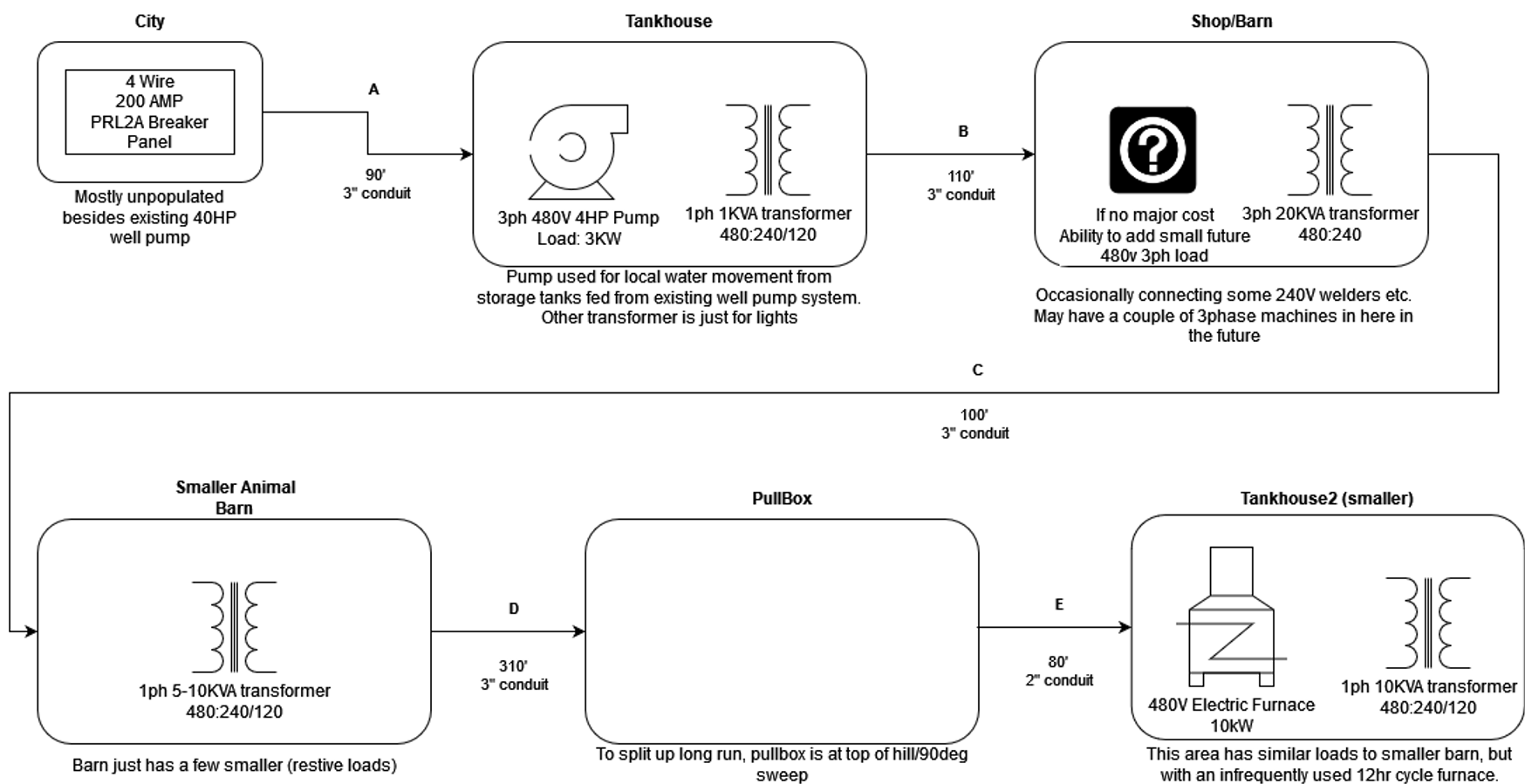NotFaraday
Member
- Location
- USA
- Occupation
- Engineer
Hey everyone!
The city is now providing my property with 200A 480v 3phase service from what I’m pretty sure is 4 wire closed delta. I hired an electrician to come out and go over the topology with me prior to any work being completed, by a professional of course.
I think most of the plan he walked through with me makes sense, but I had a couple of theoretical questions I’d love answered by someone with expertise in this field (I’m an engineer myself and I can’t help but be curious).
A crude overview for reference:

At each location in the pic below he intends to have an appropriately sized pull box with polaris connectors to splice each segment to one another and/or branch off to an appropriately sized fused 3phase disconnect to connect a transformer.
My questions are:
I do trust him, may still get a 2nd opinion, but he has good endorsements and has extensive experience with industrial in the past. I really look forward to learning more about 3 phase from you guys and working with him.
The city is now providing my property with 200A 480v 3phase service from what I’m pretty sure is 4 wire closed delta. I hired an electrician to come out and go over the topology with me prior to any work being completed, by a professional of course.
I think most of the plan he walked through with me makes sense, but I had a couple of theoretical questions I’d love answered by someone with expertise in this field (I’m an engineer myself and I can’t help but be curious).
A crude overview for reference:

At each location in the pic below he intends to have an appropriately sized pull box with polaris connectors to splice each segment to one another and/or branch off to an appropriately sized fused 3phase disconnect to connect a transformer.
My questions are:
- Why can’t I reduce the wire gauge on a branch circuit? He was adamant about it being the same gauge throughout the entirety of the run , which leads me to believe I’d need to have quite a few home runs to avoid needing 1000s of ft of say 2/0.
- i.e. why can’t I run 2/0 to the barn, connect either to 2 fused disconnects or to a small breaker panel, and have one appropriately sized 3ph breaker with say 2 gauge to the 3 phase transformer and another 3ph breaker with just 2 gauge continuing to downstream loads like a subpanel in a house? (note: made up the gauges)
- Do the disconnect fuses prior to the primary of the transformer have any sizing requirement, I think I’ve seen OCPD requirement of 125% max amperage if <9 A online?
- If I choose to do a closed delta 3ph transformer for my barn/shop, in order to have full 240v for my welder, is it true I can pull say ~70% of the transformers rated power through just 2 of the hots in the secondary? He reassured me it’s obviously not like it’s just ⅓ of the power per “phase” but I’m curious what that limit is.
- Why do I need to run the neutral to the sites where there’s just a smaller transformer, I understand I don’t need the 3rd hot if it’s just a single phase transformer but what’s the neutral for? Is it just bonded to earth/the secondary neutral tap to establish a consistent ground reference?
I do trust him, may still get a 2nd opinion, but he has good endorsements and has extensive experience with industrial in the past. I really look forward to learning more about 3 phase from you guys and working with him.
